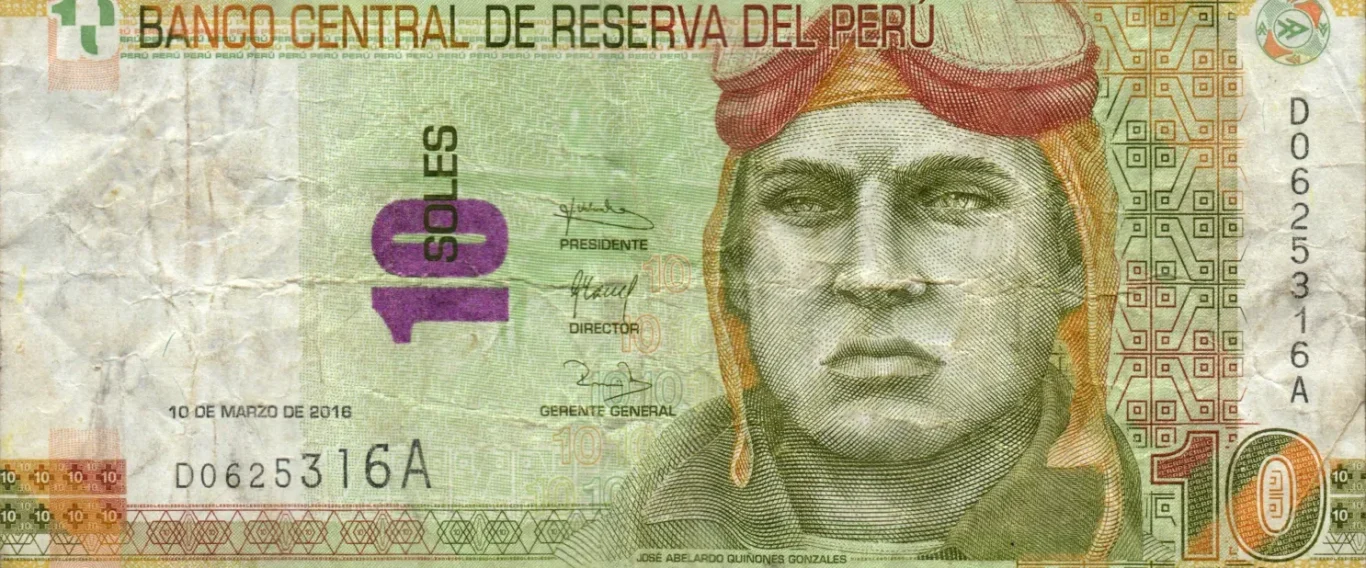🏛️ Gallery of Bills

Country: Zimbabwe
Denomination: One Hundred Trillion Dollars (100,000,000,000,000 ZWD)
Issuer: Reserve Bank of Zimbabwe
Year of Issue: 2008
Serial Number: AA0768802
Design Elements:
The front of the note features an image of the Chiremba Balancing Rocks, a famous natural rock formation near Harare, symbolizing stability.
Security features include a watermark, a security thread, and color-shifting ink.

Country: China
Denomination: 20 Yuan
Issuer: People's Bank of China (中国人民银行)
Year of Issue: 2021
Occasion: Commemorating the Beijing 2022 Winter Olympics
Design Features:
The front side (as seen in the image) features a pair of figure skaters, symbolizing the Winter Olympic sports.
The official emblem of the Beijing 2022 Winter Olympics and the Olympic rings are also visible.
A stylized image of the National Speed Skating Oval (nicknamed the "Ice Ribbon") appears on the right.
The note's background and colors reflect a cool, icy theme, fitting the winter sports theme.
This banknote is a limited edition commemorative note, notable for its unique design and significance tied to a major international sporting event.

Country: Albania
Denomination: 10,000 Lekë
Issuer: Banka e Shqipërisë (Bank of Albania)
Design Theme: Albanian culture and national identity
Main Portrait: Asdreni (pen name of Aleksandër Stavre Drenova, 1872–1947)
He was a prominent Albanian poet and writer, known for writing the lyrics of the Albanian national anthem.
Design Features:
The front of the note shows a portrait of Asdreni, with modern Albanian architectural motifs in the background.
Text: "DHJETË MIJË LEKË" means "Ten Thousand Lekë".
Security features include holographic elements, microprinting, and color-shifting ink.
The back (not shown) typically includes symbols reflecting Albanian cultural or historical heritage.
Year of Issue: Part of the new Albanian banknote series introduced in 2019 and onward.
This is the highest denomination in current Albanian currency circulation, reflecting its role in larger transactions and value storage.

Country: Netherlands
Denomination: 50 Gulden (ƒ50)
Issuer: De Nederlandsche Bank (The Dutch Central Bank)
Design Theme: Nature – specifically, the sunflower
Design Features:
The front of the note features a detailed and vibrant image of a sunflower, showcasing the Netherlands' strong association with art (particularly Van Gogh) and natural beauty.
The number 50 is prominently displayed in the top left, and the word "vijftig gulden" (meaning "fifty guilders") is printed vertically on the right.
The note is known for its modern and colorful design, created by Ootje Oxenaar, a renowned Dutch graphic designer.
Year of Issue: This version of the 50 gulden note was introduced in 1982 and remained in circulation until the euro replaced the guilder in 2002.
This banknote is widely regarded as one of the most iconic and aesthetically pleasing European currencies of the pre-euro era.

Country: Cuba
Denomination: 3 Pesos (CUP – Cuban Peso)
Issuer: Banco Central de Cuba (Central Bank of Cuba)
Year of Issue: 2004
Portrait: Ernesto "Che" Guevara
The iconic revolutionary leader of Argentine origin, who played a major role in the Cuban Revolution.
He also served as President of the National Bank of Cuba, which is noted beneath the signature on the note.
Design Features:
The note is predominantly red in color.
The central text reads “3 PESOS” in ornate type.
Serial number: 251388 (in red, repeated on both sides).
The watermark and security features are subtle but include microtext and printing details to deter counterfeiting.

Country: Peru
Denomination: 10 Soles (PEN – Peruvian Sol)
Issuer: Banco Central de Reserva del Perú (Central Reserve Bank of Peru)
Date on Note: March 10, 2016
Portrait: José Abelardo Quiñones Gonzales
A celebrated Peruvian military aviator and national hero.
He is renowned for sacrificing his life during the Ecuadorian–Peruvian War in 1941 by crashing his damaged plane into an enemy position.
Design Features:
The portrait of Quiñones is shown wearing pilot gear.
Denomination “10” and the word “SOLES” are clearly printed in large, bold font.
Security features include microprinting, watermark, security thread, and color-shifting ink.
The design includes traditional Peruvian geometric patterns along the edges and background.
This banknote is part of a series issued by Peru to honor its historical figures and cultural identity. It remains in active circulation and is a common denomination used in everyday transactions.

Country: Myanmar (Burma)
Denomination: 35 Kyats
Issuer: Central Bank of Myanmar
Language on Note: Burmese
Portrait: Likely General Aung San, a national hero and founding father of modern Myanmar, shown in military uniform.
Design Features:
The number ၃၅ (35 in Burmese numerals) is clearly visible in the corners.
Complex traditional patterns and a mythical lion motif (a symbol of protection) are present in the background.
The text is entirely in Burmese script.
Unusual Denomination:
This 35 kyats note is highly unusual and rare. It was issued in 1985 under the regime of military ruler Ne Win, reportedly based on his superstitious belief in numerology—specifically, that numbers divisible by 9 brought good luck.
Today, this note is out of circulation and is mostly of interest to collectors due to its unique denomination and historical context.

Country/Region: Hong Kong (Special Administrative Region of China)
Denomination: 10 Hong Kong Dollars (HKD)
Issuer: Government of the Hong Kong SAR
Date on Note: 1st July 2002
Design Features:
A highly modern, abstract design with geometric shapes and layered patterns in purple, pink, and blue tones.
Text in English and Traditional Chinese.
The note clearly states “Legal Tender in Hong Kong”.
Denomination appears in multiple scripts: Arabic numerals, Chinese characters (拾), and English.
Features include a watermark, security thread, and see-through register.
Purpose and Context:
This banknote stands out as the only note issued by the government itself, whereas other Hong Kong banknotes are typically issued by commercial banks (e.g., HSBC, Bank of China, Standard Chartered).
Issued to meet public demand for a smaller denomination in durable, attractive polymer.
This note is still legal tender and valued for both its usability and modern design, making it a popular example of contemporary banknote art.

Country: Romania
Denomination: 2,000 Lei (ROL – old Romanian leu)
Issuer: Banca Națională a României (National Bank of Romania)
Year of Issue: 1999
Material: Polymer (plastic note)
Occasion:
Total Solar Eclipse of August 11, 1999
Celebrating the approach of the year 2000 (Y2K)
Design Features:
The front (shown in the image) features an artistic depiction of the solar system and the solar eclipse, with various planets and orbits.
The word "Eclipsa Totală de Soare" (Total Solar Eclipse) is included in the design.
Denomination 2,000 lei is printed in large font on the left and right sides.
Use of bright colors and modern graphics, highly unique for banknotes of the time.
Special Notes:
One of the first polymer banknotes issued in Europe.
Considered a collector's item today, especially in pristine condition.
The reverse side features a stylized map of Romania with the eclipse path.
This banknote is one of the most visually striking and scientifically themed notes ever issued, combining astronomy, futurism, and national pride.

Country: Suriname
Denomination: 500 Gulden
Issuer: Centrale Bank van Suriname (Central Bank of Suriname)
Currency: Gulden (used before the Surinamese dollar was introduced in 2004)
Design Theme: Nature and culture of Suriname
Front Design Features:
Dominant image of a large hibiscus flower in vivid red and pink tones, symbolizing the country’s rich tropical flora.
A butterfly and abstract security patterns are also present.
The number 500 appears prominently in the top left and lower right corners.
Text includes:
“VIJF HONDERD GULDEN” (Dutch for “five hundred guilders”)
“CENTRALE BANK VAN SURINAME” on the left border.
Security Features:
Microtext, watermarks, intricate patterns, and color-shifting ink.
A transparent window or watermark area, typical of later gulden notes.
Historical Context:
This note was used before the Surinamese dollar (SRD) replaced the gulden at a rate of 1 SRD = 1,000 gulden in 2004. Today, it is considered a collector’s item, admired for its colorful and tropical design that reflects Suriname’s biodiversity.

Country: United States of America (Thirteen Colonies)
Denomination: Seven Dollars
Issuer: Continental Congress
Date of Issue: May 10, 1775
Location: Philadelphia
Currency Type: Continental Currency (issued by the Continental Congress before the U.S. dollar was officially standardized)
Design Features:
Text states:
“This Bill entitles the Bearer to receive SEVEN Spanish milled DOLLARS, or the Value thereof in Gold or Silver, according to the Resolutions of the CONGRESS, held at Philadelphia, the 10th of May, 1775.”
The left medallion contains a nature scene with the Latin word "SUSTINEBIT" (meaning "It will endure").
Serial number (No. 30051) is handwritten in red ink.
Signature at the bottom authenticates the note.
Ornate border printing and typography typical of colonial American notes.
Historical Context:
This note was part of the first issues of Continental Currency, created to help finance the Revolutionary War. The reference to “Spanish milled dollars” reflects the use of foreign coinage in the colonies at the time. Notes like these suffered from rapid devaluation and inflation, eventually leading to the phrase "not worth a Continental."
Today, such notes are valuable historical artifacts and collector’s items, representing early American attempts at unified national finance.

Country: Russian Soviet Federative Socialist Republic (RSFSR)
Denomination: 60 Rubles (60 Рублей)
Date of Issue: 1919
Issuer: Likely the People's Commissariat of Finance or early Soviet Treasury
Language: Russian
Currency Type: Transitional Soviet ruble during the Russian Civil War period
Design Features:
The center features the hammer and sickle symbol inside a shield, framed by wheat ears, representing workers and peasants.
Above the scroll: “Пролетарии всех стран, соединяйтесь!” – "Workers of the world, unite!"
Below: “Подделка расчетных знаков преследуется по закону” – "Counterfeiting of payment notes is punishable by law."
The denomination 60 РУБЛЕЙ appears prominently multiple times, using ornate typography and patterned backgrounds.
Historical Context:
This note comes from a time of great upheaval—the Russian Civil War (1917–1923) and the Bolshevik consolidation of power.
The unusual denomination (60 rubles) is rare and reflects the chaotic economic conditions of the time.
This was part of the first wave of Soviet monetary issues before the formation of the USSR in 1922.
Today, this banknote is a rare collector's item, valued for its historical importance and connection to the birth of the Soviet state.

Country: France
Denomination: 70 Livres (Soixante-dix livres)
Issuer: French Revolutionary Government (under the National Assembly)
Date of Issue: 29 September 1790
Currency Type: Assignat (a form of paper money used during the French Revolution)
Design Features:
Title: “DOMAINES NATIONAUX” (National Domains), referring to the lands seized from the Church and aristocracy to back the currency.
Denomination written in both numerals ("70") and words ("Soixante-dix livres").
Prominent use of French Revolutionary style—decorative borders, classical portrait (likely of King Louis XVI or symbolic figure), and elegant script.
Serial number and official signatures for authenticity.
Inscription promises payment to the bearer:
“Il sera payé au Porteur la somme de soixante-dix livres...” – “The bearer will be paid the sum of seventy livres…”
Historical Context:
Assignats were originally intended as bonds backed by confiscated Church property, but quickly evolved into fiat currency.
They became infamous for massive inflation and devaluation, contributing to economic chaos during the French Revolution.
This particular 70-livre denomination is relatively rare, as most assignats were issued in rounder numbers like 50, 100, or 500.
Today, this assignat is a valuable historical artifact and an important symbol of the economic struggles and experiments during one of the most transformative periods in French and world history.

Country: Argentina
Denomination: 500,000 Australes (Quinientos Mil Australes)
Issuer: Banco Central de la República Argentina
Portrait: Manuel Quintana
President of Argentina from 1904 to 1906.
Design Features:
The portrait of Manuel Quintana is centered on the right.
Large denomination "500,000" prominently displayed in red with drop shadow effect.
Text: “Quinientos Mil Australes” below the value.
Security features include microprinting, color shifting ink, watermark, and detailed background pattern.
Issued during a time of hyperinflation, when large denominations became necessary.
Historical Context:
The Austral (ARA or ₳) was Argentina’s currency from 1985 to 1991, replacing the peso argentino.
Due to hyperinflation, denominations increased rapidly.
In 1992, the peso convertible replaced the austral at a rate of 10,000 australes = 1 peso.
Today, this banknote is no longer legal tender but remains a symbol of Argentina's economic crisis of the late 1980s and early 1990s, and is of interest to collectors.

Country: Germany
Denomination: 70 Pfennig
Currency: German Mark / Pfennig (subunit)
Issuer: Local German municipality or city (in this case, likely the city of Weißenburg based on the architecture and caption)
Date of Issue: Circa 1917–1923, during the Weimar Republic or late WWI/early postwar period
Currency Type: Notgeld (literally "emergency money")
Design Features:
Top section shows medieval city walls and towers, likely a depiction of Weißenburg in Bavaria.
Bottom section illustrates a panoramic view of the town's rooftops and churches.
Centered at the top: the denomination “70 Pf” in a decorative medallion.
Framing and color schemes are ornate, with a historic and regional artistic style.
Historical Context:
Notgeld was issued locally by cities, towns, and institutions in Germany during times of economic crisis, particularly:
World War I (1914–1918)
The post-war period (1919–1923) marked by hyperinflation
These notes often featured regional art, culture, or landmarks, and were intended for short-term use due to coin shortages.
Today, Notgeld is a popular collector’s item, prized for its artistic designs, historical value, and local character. This particular note, with its 70 Pfennig denomination, is especially interesting as it reflects the flexibility and creativity of local economies during national instability.

Country: Spain
Denomination: 10,000 Pesetas (Diez Mil Pesetas)
Issuer: Banco de España (Bank of Spain)
Date of Series: Issued in 1992
Portrait: Juan Carlos I de Borbón (Not on this note — instead, the portrait is of Juan Ramón Jiménez)
Juan Ramón Jiménez (1881–1958) was a Nobel Prize-winning Spanish poet, best known for his work Platero y yo.
He was awarded the Nobel Prize in Literature in 1956.
Design Features:
On the right: a large, detailed portrait of Jiménez wearing a beret.
Denomination “10,000” is printed prominently on both sides.
The text “DIEZ MIL PESETAS” appears in the center.
Features include microtext, a watermark, and security threads.
Historical Context:
This was the highest denomination ever printed for the Spanish peseta before Spain adopted the euro in 2002.
The peseta was replaced at a fixed rate of 1 euro = 166.386 pesetas.
This note is now obsolete but remains highly collectible, especially due to its high denomination, cultural tribute, and elegant design celebrating Spanish literary heritage.
© Copyright. All rights reserved
Contact | Privacy Policy
Necesitamos su consentimiento para cargar las traducciones
Utilizamos un servicio de terceros para traducir el contenido del sitio web que puede recopilar datos sobre su actividad. Por favor revise los detalles en la política de privacidad y acepte el servicio para ver las traducciones.

